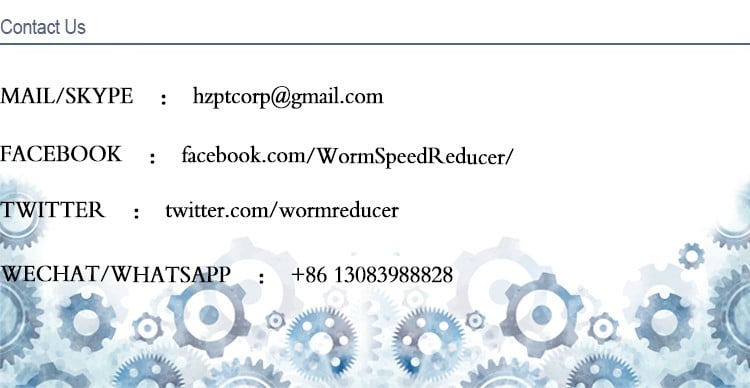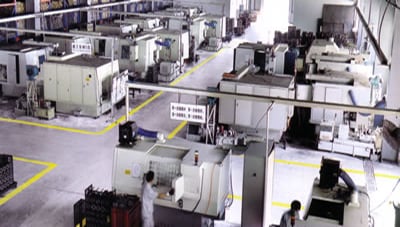Product Description
| OE | 7L6521102Q |
| Vehicle model | Volkswagen Touareg Porsche Cayenne |
We are committed to the production and research and development of transmission shafts, as well as the sales of mid to high-end automotive transmission shafts. We serve high-quality customers with high-quality products. At present, we mainly produce Mercedes Benz, BMW, Audi, Volkswagen, Porsche, Volvo, Land Rover, Jaguar, Maserati, Ferrari, Lamborghini, and Bentley
Reasons for choosing us
1. High quality (quieter to move)
2. After sales worry free (one-on-1 service)
3. Factory direct sales (bypassing intermediaries)
4. Support for 1 custom thread
/* January 22, 2571 19:08:37 */!function(){function s(e,r){var a,o={};try{e&&e.split(“,”).forEach(function(e,t){e&&(a=e.match(/(.*?):(.*)$/))&&1
| After-sales Service: | 12 Months |
|---|---|
| Color: | Black |
| Certification: | ISO |
| Type: | Drive Shaft |
| Application Brand: | Volkswagen |
| Material: | Steel |
| Samples: |
US$ 110/Piece
1 Piece(Min.Order) | |
|---|
| Customization: |
Available
| Customized Request |
|---|

How do drive shafts handle variations in speed and torque during operation?
Drive shafts are designed to handle variations in speed and torque during operation by employing specific mechanisms and configurations. These mechanisms allow the drive shafts to accommodate the changing demands of power transmission while maintaining smooth and efficient operation. Here’s a detailed explanation of how drive shafts handle variations in speed and torque:
1. Flexible Couplings:
Drive shafts often incorporate flexible couplings, such as universal joints (U-joints) or constant velocity (CV) joints, to handle variations in speed and torque. These couplings provide flexibility and allow the drive shaft to transmit power even when the driving and driven components are not perfectly aligned. U-joints consist of two yokes connected by a cross-shaped bearing, allowing for angular movement between the drive shaft sections. This flexibility accommodates variations in speed and torque and compensates for misalignment. CV joints, which are commonly used in automotive drive shafts, maintain a constant velocity of rotation while accommodating changing operating angles. These flexible couplings enable smooth power transmission and reduce vibrations and wear caused by speed and torque variations.
2. Slip Joints:
In some drive shaft designs, slip joints are incorporated to handle variations in length and accommodate changes in distance between the driving and driven components. A slip joint consists of an inner and outer tubular section with splines or a telescoping mechanism. As the drive shaft experiences changes in length due to suspension movement or other factors, the slip joint allows the shaft to extend or compress without affecting the power transmission. By allowing axial movement, slip joints help prevent binding or excessive stress on the drive shaft during variations in speed and torque, ensuring smooth operation.
3. Balancing:
Drive shafts undergo balancing procedures to optimize their performance and minimize vibrations caused by speed and torque variations. Imbalances in the drive shaft can lead to vibrations, which not only affect the comfort of vehicle occupants but also increase wear and tear on the shaft and its associated components. Balancing involves redistributing mass along the drive shaft to achieve even weight distribution, reducing vibrations and improving overall performance. Dynamic balancing, which typically involves adding or removing small weights, ensures that the drive shaft operates smoothly even under varying speeds and torque loads.
4. Material Selection and Design:
The selection of materials and the design of drive shafts play a crucial role in handling variations in speed and torque. Drive shafts are typically made from high-strength materials, such as steel or aluminum alloys, chosen for their ability to withstand the forces and stresses associated with varying operating conditions. The diameter and wall thickness of the drive shaft are also carefully determined to ensure sufficient strength and stiffness. Additionally, the design incorporates considerations for factors such as critical speed, torsional rigidity, and resonance avoidance, which help maintain stability and performance during speed and torque variations.
5. Lubrication:
Proper lubrication is essential for drive shafts to handle variations in speed and torque. Lubricating the joints, such as U-joints or CV joints, reduces friction and heat generated during operation, ensuring smooth movement and minimizing wear. Adequate lubrication also helps prevent the binding of components, allowing the drive shaft to accommodate speed and torque variations more effectively. Regular lubrication maintenance is necessary to ensure optimal performance and extend the lifespan of the drive shaft.
6. System Monitoring:
Monitoring the performance of the drive shaft system is important to identify any issues related to variations in speed and torque. Unusual vibrations, noises, or changes in power transmission can indicate potential problems with the drive shaft. Regular inspections and maintenance checks allow for the early detection and resolution of issues, helping to prevent further damage and ensure the drive shaft continues to handle speed and torque variations effectively.
In summary, drive shafts handle variations in speed and torque during operation through the use of flexible couplings, slip joints, balancing procedures, appropriate material selection and design, lubrication, and system monitoring. These mechanisms and practices allow the drive shaft to accommodate misalignment, changes in length, and variations in power demands, ensuring efficient power transmission, smooth operation, and reduced wear and tear in various applications.

How do drive shafts contribute to the efficiency of vehicle propulsion and power transmission?
Drive shafts play a crucial role in the efficiency of vehicle propulsion and power transmission systems. They are responsible for transferring power from the engine or power source to the wheels or driven components. Here’s a detailed explanation of how drive shafts contribute to the efficiency of vehicle propulsion and power transmission:
1. Power Transfer:
Drive shafts transmit power from the engine or power source to the wheels or driven components. By efficiently transferring rotational energy, drive shafts enable the vehicle to move forward or drive the machinery. The design and construction of drive shafts ensure minimal power loss during the transfer process, maximizing the efficiency of power transmission.
2. Torque Conversion:
Drive shafts can convert torque from the engine or power source to the wheels or driven components. Torque conversion is necessary to match the power characteristics of the engine with the requirements of the vehicle or machinery. Drive shafts with appropriate torque conversion capabilities ensure that the power delivered to the wheels is optimized for efficient propulsion and performance.
3. Constant Velocity (CV) Joints:
Many drive shafts incorporate Constant Velocity (CV) joints, which help maintain a constant speed and efficient power transmission, even when the driving and driven components are at different angles. CV joints allow for smooth power transfer and minimize vibration or power losses that may occur due to changing operating angles. By maintaining constant velocity, drive shafts contribute to efficient power transmission and improved overall vehicle performance.
4. Lightweight Construction:
Efficient drive shafts are often designed with lightweight materials, such as aluminum or composite materials. Lightweight construction reduces the rotational mass of the drive shaft, which results in lower inertia and improved efficiency. Reduced rotational mass enables the engine to accelerate and decelerate more quickly, allowing for better fuel efficiency and overall vehicle performance.
5. Minimized Friction:
Efficient drive shafts are engineered to minimize frictional losses during power transmission. They incorporate features such as high-quality bearings, low-friction seals, and proper lubrication to reduce energy losses caused by friction. By minimizing friction, drive shafts enhance power transmission efficiency and maximize the available power for propulsion or operating other machinery.
6. Balanced and Vibration-Free Operation:
Drive shafts undergo dynamic balancing during the manufacturing process to ensure smooth and vibration-free operation. Imbalances in the drive shaft can lead to power losses, increased wear, and vibrations that reduce overall efficiency. By balancing the drive shaft, it can spin evenly, minimizing vibrations and optimizing power transmission efficiency.
7. Maintenance and Regular Inspection:
Proper maintenance and regular inspection of drive shafts are essential for maintaining their efficiency. Regular lubrication, inspection of joints and components, and prompt repair or replacement of worn or damaged parts help ensure optimal power transmission efficiency. Well-maintained drive shafts operate with minimal friction, reduced power losses, and improved overall efficiency.
8. Integration with Efficient Transmission Systems:
Drive shafts work in conjunction with efficient transmission systems, such as manual, automatic, or continuously variable transmissions. These transmissions help optimize power delivery and gear ratios based on driving conditions and vehicle speed. By integrating with efficient transmission systems, drive shafts contribute to the overall efficiency of the vehicle propulsion and power transmission system.
9. Aerodynamic Considerations:
In some cases, drive shafts are designed with aerodynamic considerations in mind. Streamlined drive shafts, often used in high-performance or electric vehicles, minimize drag and air resistance to improve overall vehicle efficiency. By reducing aerodynamic drag, drive shafts contribute to the efficient propulsion and power transmission of the vehicle.
10. Optimized Length and Design:
Drive shafts are designed to have optimal lengths and designs to minimize energy losses. Excessive drive shaft length or improper design can introduce additional rotational mass, increase bending stresses, and result in energy losses. By optimizing the length and design, drive shafts maximize power transmission efficiency and contribute to improved overall vehicle efficiency.
Overall, drive shafts contribute to the efficiency of vehicle propulsion and power transmission through effective power transfer, torque conversion, utilization of CV joints, lightweight construction, minimized friction, balanced operation, regular maintenance, integration with efficient transmission systems, aerodynamic considerations, and optimized length and design. By ensuring efficient power delivery and minimizing energy losses, drive shafts play a significant role in enhancing the overall efficiency and performance of vehicles and machinery.

What benefits do drive shafts offer for different types of vehicles and equipment?
Drive shafts offer several benefits for different types of vehicles and equipment. They play a crucial role in power transmission and contribute to the overall performance, efficiency, and functionality of various systems. Here’s a detailed explanation of the benefits that drive shafts provide:
1. Efficient Power Transmission:
Drive shafts enable efficient power transmission from the engine or power source to the wheels or driven components. By connecting the engine or motor to the driven system, drive shafts efficiently transfer rotational power, allowing vehicles and equipment to perform their intended functions. This efficient power transmission ensures that the power generated by the engine is effectively utilized, optimizing the overall performance and productivity of the system.
2. Versatility:
Drive shafts offer versatility in their applications. They are used in various types of vehicles, including cars, trucks, motorcycles, and off-road vehicles. Additionally, drive shafts are employed in a wide range of equipment and machinery, such as agricultural machinery, construction equipment, industrial machinery, and marine vessels. The ability to adapt to different types of vehicles and equipment makes drive shafts a versatile component for power transmission.
3. Torque Handling:
Drive shafts are designed to handle high levels of torque. Torque is the rotational force generated by the engine or power source. Drive shafts are engineered to efficiently transmit this torque without excessive twisting or bending. By effectively handling torque, drive shafts ensure that the power generated by the engine is reliably transferred to the wheels or driven components, enabling vehicles and equipment to overcome resistance, such as heavy loads or challenging terrains.
4. Flexibility and Compensation:
Drive shafts provide flexibility and compensation for angular movement and misalignment. In vehicles, drive shafts accommodate the movement of the suspension system, allowing the wheels to move up and down independently. This flexibility ensures a constant power transfer even when the vehicle encounters uneven terrain. Similarly, in machinery, drive shafts compensate for misalignment between the engine or motor and the driven components, ensuring smooth power transmission and preventing excessive stress on the drivetrain.
5. Weight Reduction:
Drive shafts contribute to weight reduction in vehicles and equipment. Compared to other forms of power transmission, such as belt drives or chain drives, drive shafts are typically lighter in weight. This reduction in weight helps improve fuel efficiency in vehicles and reduces the overall weight of equipment, leading to enhanced maneuverability and increased payload capacity. Additionally, lighter drive shafts contribute to a better power-to-weight ratio, resulting in improved performance and acceleration.
6. Durability and Longevity:
Drive shafts are designed to be durable and long-lasting. They are constructed using materials such as steel or aluminum, which offer high strength and resistance to wear and fatigue. Drive shafts undergo rigorous testing and quality control measures to ensure their reliability and longevity. Proper maintenance, including lubrication and regular inspections, further enhances their durability. The robust construction and long lifespan of drive shafts contribute to the overall reliability and cost-effectiveness of vehicles and equipment.
7. Safety:
Drive shafts incorporate safety features to protect operators and bystanders. In vehicles, drive shafts are often enclosed within a protective tube or housing, preventing contact with moving parts and reducing the risk of injury in the event of a failure. Similarly, in machinery, safety shields or guards are commonly installed around exposed drive shafts to minimize the potential hazards associated with rotating components. These safety measures ensure the well-being of individuals operating or working in proximity to vehicles and equipment.
In summary, drive shafts offer several benefits for different types of vehicles and equipment. They enable efficient power transmission, provide versatility in various applications, handle torque effectively, offer flexibility and compensation, contribute to weight reduction, ensure durability and longevity, and incorporate safety features. By providing these advantages, drive shafts enhance the performance, efficiency, reliability, and safety of vehicles and equipment across a wide range of industries.


editor by CX 2024-04-19
China supplier Suitable for Volkswagen Touareg Drive Shaft Porsche Cayenne Drive Shaft 7L0521102n 95542102010, a Professional Manufacturer of Drive Shafts Cage Support Bearing
Product Description
| OE | 7L6521102Q |
| Vehicle model | Volkswagen Touareg Porsche Cayenne |
We are committed to the production and research and development of transmission shafts, as well as the sales of mid to high-end automotive transmission shafts. We serve high-quality customers with high-quality products. At present, we mainly produce Mercedes Benz, BMW, Audi, Volkswagen, Porsche, Volvo, Land Rover, Jaguar, Maserati, Ferrari, Lamborghini, and Bentley
Reasons for choosing us
1. High quality (quieter to move)
2. After sales worry free (one-on-1 service)
3. Factory direct sales (bypassing intermediaries)
4. Support for 1 custom thread
/* January 22, 2571 19:08:37 */!function(){function s(e,r){var a,o={};try{e&&e.split(“,”).forEach(function(e,t){e&&(a=e.match(/(.*?):(.*)$/))&&1
| After-sales Service: | 12 Months |
|---|---|
| Color: | Black |
| Certification: | ISO |
| Type: | Drive Shaft |
| Application Brand: | Volkswagen |
| Material: | Steel |
| Samples: |
US$ 110/Piece
1 Piece(Min.Order) | |
|---|
| Customization: |
Available
| Customized Request |
|---|

What factors should be considered when selecting the right drive shaft for an application?
When selecting the right drive shaft for an application, several factors need to be considered. The choice of drive shaft plays a crucial role in ensuring efficient and reliable power transmission. Here are the key factors to consider:
1. Power and Torque Requirements:
The power and torque requirements of the application are essential considerations. It is crucial to determine the maximum torque that the drive shaft will need to transmit without failure or excessive deflection. This includes evaluating the power output of the engine or power source, as well as the torque demands of the driven components. Selecting a drive shaft with the appropriate diameter, material strength, and design is essential to ensure it can handle the expected torque levels without compromising performance or safety.
2. Operating Speed:
The operating speed of the drive shaft is another critical factor. The rotational speed affects the dynamic behavior of the drive shaft, including the potential for vibration, resonance, and critical speed limitations. It is important to choose a drive shaft that can operate within the desired speed range without encountering excessive vibrations or compromising the structural integrity. Factors such as the material properties, balance, and critical speed analysis should be considered to ensure the drive shaft can handle the required operating speed effectively.
3. Length and Alignment:
The length and alignment requirements of the application must be considered when selecting a drive shaft. The distance between the engine or power source and the driven components determines the required length of the drive shaft. In situations where there are significant variations in length or operating angles, telescopic drive shafts or multiple drive shafts with appropriate couplings or universal joints may be necessary. Proper alignment of the drive shaft is crucial to minimize vibrations, reduce wear and tear, and ensure efficient power transmission.
4. Space Limitations:
The available space within the application is an important factor to consider. The drive shaft must fit within the allocated space without interfering with other components or structures. It is essential to consider the overall dimensions of the drive shaft, including length, diameter, and any additional components such as joints or couplings. In some cases, custom or compact drive shaft designs may be required to accommodate space limitations while maintaining adequate power transmission capabilities.
5. Environmental Conditions:
The environmental conditions in which the drive shaft will operate should be evaluated. Factors such as temperature, humidity, corrosive agents, and exposure to contaminants can impact the performance and lifespan of the drive shaft. It is important to select materials and coatings that can withstand the specific environmental conditions to prevent corrosion, degradation, or premature failure of the drive shaft. Special considerations may be necessary for applications exposed to extreme temperatures, water, chemicals, or abrasive substances.
6. Application Type and Industry:
The specific application type and industry requirements play a significant role in drive shaft selection. Different industries, such as automotive, aerospace, industrial machinery, agriculture, or marine, have unique demands that need to be addressed. Understanding the specific needs and operating conditions of the application is crucial in determining the appropriate drive shaft design, materials, and performance characteristics. Compliance with industry standards and regulations may also be a consideration in certain applications.
7. Maintenance and Serviceability:
The ease of maintenance and serviceability should be taken into account. Some drive shaft designs may require periodic inspection, lubrication, or replacement of components. Considering the accessibility of the drive shaft and associated maintenance requirements can help minimize downtime and ensure long-term reliability. Easy disassembly and reassembly of the drive shaft can also be beneficial for repair or component replacement.
By carefully considering these factors, one can select the right drive shaft for an application that meets the power transmission needs, operating conditions, and durability requirements, ultimately ensuring optimal performance and reliability.

How do drive shafts enhance the performance of automobiles and trucks?
Drive shafts play a significant role in enhancing the performance of automobiles and trucks. They contribute to various aspects of vehicle performance, including power delivery, traction, handling, and overall efficiency. Here’s a detailed explanation of how drive shafts enhance the performance of automobiles and trucks:
1. Power Delivery:
Drive shafts are responsible for transferring power from the engine to the wheels, enabling the vehicle to move forward. By efficiently transmitting power without significant losses, drive shafts ensure that the engine’s power is effectively utilized, resulting in improved acceleration and overall performance. Well-designed drive shafts with minimal power loss contribute to the vehicle’s ability to deliver power to the wheels efficiently.
2. Torque Transfer:
Drive shafts facilitate the transfer of torque from the engine to the wheels. Torque is the rotational force that drives the vehicle forward. High-quality drive shafts with proper torque conversion capabilities ensure that the torque generated by the engine is effectively transmitted to the wheels. This enhances the vehicle’s ability to accelerate quickly, tow heavy loads, and climb steep gradients, thereby improving overall performance.
3. Traction and Stability:
Drive shafts contribute to the traction and stability of automobiles and trucks. They transmit power to the wheels, allowing them to exert force on the road surface. This enables the vehicle to maintain traction, especially during acceleration or when driving on slippery or uneven terrain. The efficient power delivery through the drive shafts enhances the vehicle’s stability by ensuring balanced power distribution to all wheels, improving control and handling.
4. Handling and Maneuverability:
Drive shafts have an impact on the handling and maneuverability of vehicles. They help establish a direct connection between the engine and the wheels, allowing for precise control and responsive handling. Well-designed drive shafts with minimal play or backlash contribute to a more direct and immediate response to driver inputs, enhancing the vehicle’s agility and maneuverability.
5. Weight Reduction:
Drive shafts can contribute to weight reduction in automobiles and trucks. Lightweight drive shafts made from materials such as aluminum or carbon fiber-reinforced composites reduce the overall weight of the vehicle. The reduced weight improves the power-to-weight ratio, resulting in better acceleration, handling, and fuel efficiency. Additionally, lightweight drive shafts reduce the rotational mass, allowing the engine to rev up more quickly, further enhancing performance.
6. Mechanical Efficiency:
Efficient drive shafts minimize energy losses during power transmission. By incorporating features such as high-quality bearings, low-friction seals, and optimized lubrication, drive shafts reduce friction and minimize power losses due to internal resistance. This enhances the mechanical efficiency of the drivetrain system, allowing more power to reach the wheels and improving overall vehicle performance.
7. Performance Upgrades:
Drive shaft upgrades can be a popular performance enhancement for enthusiasts. Upgraded drive shafts, such as those made from stronger materials or with enhanced torque capacity, can handle higher power outputs from modified engines. These upgrades allow for increased performance, such as improved acceleration, higher top speeds, and better overall driving dynamics.
8. Compatibility with Performance Modifications:
Performance modifications, such as engine upgrades, increased power output, or changes to the drivetrain system, often require compatible drive shafts. Drive shafts designed to handle higher torque loads or adapt to modified drivetrain configurations ensure optimal performance and reliability. They enable the vehicle to effectively harness the increased power and torque, resulting in improved performance and responsiveness.
9. Durability and Reliability:
Robust and well-maintained drive shafts contribute to the durability and reliability of automobiles and trucks. They are designed to withstand the stresses and loads associated with power transmission. High-quality materials, appropriate balancing, and regular maintenance help ensure that drive shafts operate smoothly, minimizing the risk of failures or performance issues. Reliable drive shafts enhance the overall performance by providing consistent power delivery and minimizing downtime.
10. Compatibility with Advanced Technologies:
Drive shafts are evolving in tandem with advancements in vehicle technologies. They are increasingly being integrated with advanced systems such as hybrid powertrains, electric motors, and regenerative braking. Drive shafts designed to work seamlessly with these technologies maximize their efficiency and performance benefits, contributing to improved overall vehicle performance.
In summary, drive shafts enhance the performance of automobiles and trucks by optimizing power delivery, facilitating torque transfer, improving traction and stability, enhancing handling and maneuverability, reducing weight, increasing mechanical efficiency,and enabling compatibility with performance upgrades and advanced technologies. They play a crucial role in ensuring efficient power transmission, responsive acceleration, precise handling, and overall improved performance of vehicles.
Are there variations in drive shaft designs for different types of machinery?
Yes, there are variations in drive shaft designs to cater to the specific requirements of different types of machinery. The design of a drive shaft is influenced by factors such as the application, power transmission needs, space limitations, operating conditions, and the type of driven components. Here’s an explanation of how drive shaft designs can vary for different types of machinery:
1. Automotive Applications:
In the automotive industry, drive shaft designs can vary depending on the vehicle’s configuration. Rear-wheel-drive vehicles typically use a single-piece or two-piece drive shaft, which connects the transmission or transfer case to the rear differential. Front-wheel-drive vehicles often use a different design, employing a drive shaft that combines with the constant velocity (CV) joints to transmit power to the front wheels. All-wheel-drive vehicles may have multiple drive shafts to distribute power to all wheels. The length, diameter, material, and joint types can differ based on the vehicle’s layout and torque requirements.
2. Industrial Machinery:
Drive shaft designs for industrial machinery depend on the specific application and power transmission requirements. In manufacturing machinery, such as conveyors, presses, and rotating equipment, drive shafts are designed to transfer power efficiently within the machine. They may incorporate flexible joints or use a splined or keyed connection to accommodate misalignment or allow for easy disassembly. The dimensions, materials, and reinforcement of the drive shaft are selected based on the torque, speed, and operating conditions of the machinery.
3. Agriculture and Farming:
Agricultural machinery, such as tractors, combines, and harvesters, often requires drive shafts that can handle high torque loads and varying operating angles. These drive shafts are designed to transmit power from the engine to attachments and implements, such as mowers, balers, tillers, and harvesters. They may incorporate telescopic sections to accommodate adjustable lengths, flexible joints to compensate for misalignment during operation, and protective shielding to prevent entanglement with crops or debris.
4. Construction and Heavy Equipment:
Construction and heavy equipment, including excavators, loaders, bulldozers, and cranes, require robust drive shaft designs capable of transmitting power in demanding conditions. These drive shafts often have larger diameters and thicker walls to handle high torque loads. They may incorporate universal joints or CV joints to accommodate operating angles and absorb shocks and vibrations. Drive shafts in this category may also have additional reinforcements to withstand the harsh environments and heavy-duty applications associated with construction and excavation.
5. Marine and Maritime Applications:
Drive shaft designs for marine applications are specifically engineered to withstand the corrosive effects of seawater and the high torque loads encountered in marine propulsion systems. Marine drive shafts are typically made from stainless steel or other corrosion-resistant materials. They may incorporate flexible couplings or dampening devices to reduce vibration and mitigate the effects of misalignment. The design of marine drive shafts also considers factors such as shaft length, diameter, and support bearings to ensure reliable power transmission in marine vessels.
6. Mining and Extraction Equipment:
In the mining industry, drive shafts are used in heavy machinery and equipment such as mining trucks, excavators, and drilling rigs. These drive shafts need to withstand extremely high torque loads and harsh operating conditions. Drive shaft designs for mining applications often feature larger diameters, thicker walls, and specialized materials such as alloy steel or composite materials. They may incorporate universal joints or CV joints to handle operating angles, and they are designed to be resistant to abrasion and wear.
These examples highlight the variations in drive shaft designs for different types of machinery. The design considerations take into account factors such as power requirements, operating conditions, space constraints, alignment needs, and the specific demands of the machinery or industry. By tailoring the drive shaft design to the unique requirements of each application, optimal power transmission efficiency and reliability can be achieved.


editor by CX 2024-03-09
China Custom Suitable for Volkswagen Touareg Drive Shaft Porsche Cayenne Drive Shaft 7L0521102n 95542102010, a Professional Manufacturer of Drive Shafts Cage Support Bearing
Product Description
| OE | 7L6521102Q |
| Vehicle model | Volkswagen Touareg Porsche Cayenne |
We are committed to the production and research and development of transmission shafts, as well as the sales of mid to high-end automotive transmission shafts. We serve high-quality customers with high-quality products. At present, we mainly produce Mercedes Benz, BMW, Audi, Volkswagen, Porsche, Volvo, Land Rover, Jaguar, Maserati, Ferrari, Lamborghini, and Bentley
Reasons for choosing us
1. High quality (quieter to move)
2. After sales worry free (one-on-1 service)
3. Factory direct sales (bypassing intermediaries)
4. Support for 1 custom thread
/* March 10, 2571 17:59:20 */!function(){function s(e,r){var a,o={};try{e&&e.split(“,”).forEach(function(e,t){e&&(a=e.match(/(.*?):(.*)$/))&&1
| After-sales Service: | 12 Months |
|---|---|
| Color: | Black |
| Certification: | ISO |
| Type: | Drive Shaft |
| Application Brand: | Volkswagen |
| Material: | Steel |
| Samples: |
US$ 110/Piece
1 Piece(Min.Order) | |
|---|
| Customization: |
Available
| Customized Request |
|---|

What maintenance practices are crucial for prolonging the lifespan of drive shafts?
To prolong the lifespan of drive shafts and ensure their optimal performance, several maintenance practices are crucial. Regular maintenance helps identify and address potential issues before they escalate, reduces wear and tear, and ensures the drive shaft operates smoothly and efficiently. Here are some essential maintenance practices for prolonging the lifespan of drive shafts:
1. Regular Inspection:
Performing regular inspections is vital for detecting any signs of wear, damage, or misalignment. Inspect the drive shaft visually, looking for cracks, dents, or any signs of excessive wear on the shaft itself and its associated components such as joints, yokes, and splines. Check for any signs of lubrication leaks or contamination. Additionally, inspect the fasteners and mounting points to ensure they are secure. Early detection of any issues allows for timely repairs or replacements, preventing further damage to the drive shaft.
2. Lubrication:
Proper lubrication is essential for the smooth operation and longevity of drive shafts. Lubricate the joints, such as universal joints or constant velocity joints, as recommended by the manufacturer. Lubrication reduces friction, minimizes wear, and helps dissipate heat generated during operation. Use the appropriate lubricant specified for the specific drive shaft and application, considering factors such as temperature, load, and operating conditions. Regularly check the lubrication levels and replenish as necessary to ensure optimal performance and prevent premature failure.
3. Balancing and Alignment:
Maintaining proper balancing and alignment is crucial for the lifespan of drive shafts. Imbalances or misalignments can lead to vibrations, accelerated wear, and potential failure. If vibrations or unusual noises are detected during operation, it is important to address them promptly. Perform balancing procedures as necessary, including dynamic balancing, to ensure even weight distribution along the drive shaft. Additionally, verify that the drive shaft is correctly aligned with the engine or power source and the driven components. Misalignment can cause excessive stress on the drive shaft, leading to premature failure.
4. Protective Coatings:
Applying protective coatings can help prolong the lifespan of drive shafts, particularly in applications exposed to harsh environments or corrosive substances. Consider using coatings such as zinc plating, powder coating, or specialized corrosion-resistant coatings to enhance the drive shaft’s resistance to corrosion, rust, and chemical damage. Regularly inspect the coating for any signs of degradation or damage, and reapply or repair as necessary to maintain the protective barrier.
5. Torque and Fastener Checks:
Ensure that the drive shaft’s fasteners, such as bolts, nuts, or clamps, are properly torqued and secured according to the manufacturer’s specifications. Loose or improperly tightened fasteners can lead to excessive vibrations, misalignment, or even detachment of the drive shaft. Periodically check and retighten the fasteners as recommended or after any maintenance or repair procedures. Additionally, monitor the torque levels during operation to ensure they remain within the specified range, as excessive torque can strain the drive shaft and lead to premature failure.
6. Environmental Protection:
Protecting the drive shaft from environmental factors can significantly extend its lifespan. In applications exposed to extreme temperatures, moisture, chemicals, or abrasive substances, take appropriate measures to shield the drive shaft. This may include using protective covers, seals, or guards to prevent contaminants from entering and causing damage. Regular cleaning of the drive shaft, especially in dirty or corrosive environments, can also help remove debris and prevent buildup that could compromise its performance and longevity.
7. Manufacturer Guidelines:
Follow the manufacturer’s guidelines and recommendations for maintenance practices specific to the drive shaft model and application. The manufacturer’s instructions may include specific intervals for inspections, lubrication, balancing, or other maintenance tasks. Adhering to these guidelines ensures that the drive shaft is properly maintained and serviced, maximizing its lifespan and minimizing the risk of unexpected failures.
By implementing these maintenance practices, drive shafts can operate reliably, maintain efficient power transmission, and have an extended service life, ultimately reducing downtime and ensuring optimal performance in various applications.

Can you provide real-world examples of vehicles and machinery that use drive shafts?
Drive shafts are widely used in various vehicles and machinery to transmit power from the engine or power source to the wheels or driven components. Here are some real-world examples of vehicles and machinery that utilize drive shafts:
1. Automobiles:
Drive shafts are commonly found in automobiles, especially those with rear-wheel drive or four-wheel drive systems. In these vehicles, the drive shaft transfers power from the transmission or transfer case to the rear differential or front differential, respectively. This allows the engine’s power to be distributed to the wheels, propelling the vehicle forward.
2. Trucks and Commercial Vehicles:
Drive shafts are essential components in trucks and commercial vehicles. They are used to transfer power from the transmission or transfer case to the rear axle or multiple axles in the case of heavy-duty trucks. Drive shafts in commercial vehicles are designed to handle higher torque loads and are often larger and more robust than those used in passenger cars.
3. Construction and Earthmoving Equipment:
Various types of construction and earthmoving equipment, such as excavators, loaders, bulldozers, and graders, rely on drive shafts for power transmission. These machines typically have complex drivetrain systems that use drive shafts to transfer power from the engine to the wheels or tracks, enabling them to perform heavy-duty tasks on construction sites or in mining operations.
4. Agricultural Machinery:
Agricultural machinery, including tractors, combines, and harvesters, utilize drive shafts to transmit power from the engine to the wheels or driven components. Drive shafts in agricultural machinery are often subjected to demanding conditions and may have additional features such as telescopic sections to accommodate variable distances between components.
5. Industrial Machinery:
Industrial machinery, such as manufacturing equipment, generators, pumps, and compressors, often incorporate drive shafts in their power transmission systems. These drive shafts transfer power from electric motors, engines, or other power sources to various driven components, enabling the machinery to perform specific tasks in industrial settings.
6. Marine Vessels:
In marine applications, drive shafts are commonly used to transmit power from the engine to the propeller in boats, ships, and other watercraft. Marine drive shafts are typically longer and designed to withstand the unique challenges posed by water environments, including corrosion resistance and appropriate sealing mechanisms.
7. Recreational Vehicles (RVs) and Motorhomes:
RVs and motorhomes often employ drive shafts as part of their drivetrain systems. These drive shafts transfer power from the transmission to the rear axle, allowing the vehicle to move and providing propulsion. Drive shafts in RVs may have additional features such as dampers or vibration-reducing components to enhance comfort during travel.
8. Off-Road and Racing Vehicles:
Off-road vehicles, such as SUVs, trucks, and all-terrain vehicles (ATVs), as well as racing vehicles, frequently utilize drive shafts. These drive shafts are designed to withstand the rigors of off-road conditions or high-performance racing, transmitting power efficiently to the wheels and ensuring optimal traction and performance.
9. Railway Rolling Stock:
In railway systems, drive shafts are employed in locomotives and some types of rolling stock. They transfer power from the locomotive’s engine to the wheels or propulsion system, enabling the train to move along the tracks. Railway drive shafts are typically much longer and may have additional features to accommodate the articulated or flexible nature of some train configurations.
10. Wind Turbines:
Large-scale wind turbines used for generating electricity incorporate drive shafts in their power transmission systems. The drive shafts transfer rotational energy from the turbine’s blades to the generator, where it is converted into electrical power. Drive shafts in wind turbines are designed to handle the significant torque and rotational forces generated by the wind.
These examples demonstrate the broad range of vehicles and machinery that rely on drive shafts for efficient power transmission and propulsion. Drive shafts are essential components in various industries, enabling the transfer of power from the source to the driven components, ultimately facilitating movement, operation, or the performance of specific tasks.

Are there variations in drive shaft designs for different types of machinery?
Yes, there are variations in drive shaft designs to cater to the specific requirements of different types of machinery. The design of a drive shaft is influenced by factors such as the application, power transmission needs, space limitations, operating conditions, and the type of driven components. Here’s an explanation of how drive shaft designs can vary for different types of machinery:
1. Automotive Applications:
In the automotive industry, drive shaft designs can vary depending on the vehicle’s configuration. Rear-wheel-drive vehicles typically use a single-piece or two-piece drive shaft, which connects the transmission or transfer case to the rear differential. Front-wheel-drive vehicles often use a different design, employing a drive shaft that combines with the constant velocity (CV) joints to transmit power to the front wheels. All-wheel-drive vehicles may have multiple drive shafts to distribute power to all wheels. The length, diameter, material, and joint types can differ based on the vehicle’s layout and torque requirements.
2. Industrial Machinery:
Drive shaft designs for industrial machinery depend on the specific application and power transmission requirements. In manufacturing machinery, such as conveyors, presses, and rotating equipment, drive shafts are designed to transfer power efficiently within the machine. They may incorporate flexible joints or use a splined or keyed connection to accommodate misalignment or allow for easy disassembly. The dimensions, materials, and reinforcement of the drive shaft are selected based on the torque, speed, and operating conditions of the machinery.
3. Agriculture and Farming:
Agricultural machinery, such as tractors, combines, and harvesters, often requires drive shafts that can handle high torque loads and varying operating angles. These drive shafts are designed to transmit power from the engine to attachments and implements, such as mowers, balers, tillers, and harvesters. They may incorporate telescopic sections to accommodate adjustable lengths, flexible joints to compensate for misalignment during operation, and protective shielding to prevent entanglement with crops or debris.
4. Construction and Heavy Equipment:
Construction and heavy equipment, including excavators, loaders, bulldozers, and cranes, require robust drive shaft designs capable of transmitting power in demanding conditions. These drive shafts often have larger diameters and thicker walls to handle high torque loads. They may incorporate universal joints or CV joints to accommodate operating angles and absorb shocks and vibrations. Drive shafts in this category may also have additional reinforcements to withstand the harsh environments and heavy-duty applications associated with construction and excavation.
5. Marine and Maritime Applications:
Drive shaft designs for marine applications are specifically engineered to withstand the corrosive effects of seawater and the high torque loads encountered in marine propulsion systems. Marine drive shafts are typically made from stainless steel or other corrosion-resistant materials. They may incorporate flexible couplings or dampening devices to reduce vibration and mitigate the effects of misalignment. The design of marine drive shafts also considers factors such as shaft length, diameter, and support bearings to ensure reliable power transmission in marine vessels.
6. Mining and Extraction Equipment:
In the mining industry, drive shafts are used in heavy machinery and equipment such as mining trucks, excavators, and drilling rigs. These drive shafts need to withstand extremely high torque loads and harsh operating conditions. Drive shaft designs for mining applications often feature larger diameters, thicker walls, and specialized materials such as alloy steel or composite materials. They may incorporate universal joints or CV joints to handle operating angles, and they are designed to be resistant to abrasion and wear.
These examples highlight the variations in drive shaft designs for different types of machinery. The design considerations take into account factors such as power requirements, operating conditions, space constraints, alignment needs, and the specific demands of the machinery or industry. By tailoring the drive shaft design to the unique requirements of each application, optimal power transmission efficiency and reliability can be achieved.


editor by CX 2024-02-07
China manufacturer Applicable to Porsche Panamera Drive Shaft 970 Series 97042101102 97042101104 Panamera Drive Shaft Universal Joint Disc Ball Cage Dust Cover Bearing
Product Description
| OE | 9757101104 |
| Vehicle model | Panamera 970 |
We are committed to the production and research and development of transmission shafts, as well as the sales of mid to high-end automotive transmission shafts. We serve high-quality customers with high-quality products. At present, we mainly produce Mercedes Benz, BMW, Audi, Volkswagen, Porsche, Volvo, Land Rover, Jaguar, Maserati, Ferrari, Lamborghini, and Bentley
Reasons for choosing us
1. High quality (quieter to move)
2. After sales worry free (one-on-1 service)
3. Factory direct sales (bypassing intermediaries)
4. Support for 1 custom thread
/* March 10, 2571 17:59:20 */!function(){function s(e,r){var a,o={};try{e&&e.split(“,”).forEach(function(e,t){e&&(a=e.match(/(.*?):(.*)$/))&&1
| After-sales Service: | 12 Months |
|---|---|
| Condition: | New |
| Color: | Black |
| Certification: | ISO |
| Type: | Drive Shaft |
| Application Brand: | Porsche |
| Samples: |
US$ 120/Piece
1 Piece(Min.Order) | |
|---|
| Customization: |
Available
| Customized Request |
|---|

How do drive shafts handle variations in speed and torque during operation?
Drive shafts are designed to handle variations in speed and torque during operation by employing specific mechanisms and configurations. These mechanisms allow the drive shafts to accommodate the changing demands of power transmission while maintaining smooth and efficient operation. Here’s a detailed explanation of how drive shafts handle variations in speed and torque:
1. Flexible Couplings:
Drive shafts often incorporate flexible couplings, such as universal joints (U-joints) or constant velocity (CV) joints, to handle variations in speed and torque. These couplings provide flexibility and allow the drive shaft to transmit power even when the driving and driven components are not perfectly aligned. U-joints consist of two yokes connected by a cross-shaped bearing, allowing for angular movement between the drive shaft sections. This flexibility accommodates variations in speed and torque and compensates for misalignment. CV joints, which are commonly used in automotive drive shafts, maintain a constant velocity of rotation while accommodating changing operating angles. These flexible couplings enable smooth power transmission and reduce vibrations and wear caused by speed and torque variations.
2. Slip Joints:
In some drive shaft designs, slip joints are incorporated to handle variations in length and accommodate changes in distance between the driving and driven components. A slip joint consists of an inner and outer tubular section with splines or a telescoping mechanism. As the drive shaft experiences changes in length due to suspension movement or other factors, the slip joint allows the shaft to extend or compress without affecting the power transmission. By allowing axial movement, slip joints help prevent binding or excessive stress on the drive shaft during variations in speed and torque, ensuring smooth operation.
3. Balancing:
Drive shafts undergo balancing procedures to optimize their performance and minimize vibrations caused by speed and torque variations. Imbalances in the drive shaft can lead to vibrations, which not only affect the comfort of vehicle occupants but also increase wear and tear on the shaft and its associated components. Balancing involves redistributing mass along the drive shaft to achieve even weight distribution, reducing vibrations and improving overall performance. Dynamic balancing, which typically involves adding or removing small weights, ensures that the drive shaft operates smoothly even under varying speeds and torque loads.
4. Material Selection and Design:
The selection of materials and the design of drive shafts play a crucial role in handling variations in speed and torque. Drive shafts are typically made from high-strength materials, such as steel or aluminum alloys, chosen for their ability to withstand the forces and stresses associated with varying operating conditions. The diameter and wall thickness of the drive shaft are also carefully determined to ensure sufficient strength and stiffness. Additionally, the design incorporates considerations for factors such as critical speed, torsional rigidity, and resonance avoidance, which help maintain stability and performance during speed and torque variations.
5. Lubrication:
Proper lubrication is essential for drive shafts to handle variations in speed and torque. Lubricating the joints, such as U-joints or CV joints, reduces friction and heat generated during operation, ensuring smooth movement and minimizing wear. Adequate lubrication also helps prevent the binding of components, allowing the drive shaft to accommodate speed and torque variations more effectively. Regular lubrication maintenance is necessary to ensure optimal performance and extend the lifespan of the drive shaft.
6. System Monitoring:
Monitoring the performance of the drive shaft system is important to identify any issues related to variations in speed and torque. Unusual vibrations, noises, or changes in power transmission can indicate potential problems with the drive shaft. Regular inspections and maintenance checks allow for the early detection and resolution of issues, helping to prevent further damage and ensure the drive shaft continues to handle speed and torque variations effectively.
In summary, drive shafts handle variations in speed and torque during operation through the use of flexible couplings, slip joints, balancing procedures, appropriate material selection and design, lubrication, and system monitoring. These mechanisms and practices allow the drive shaft to accommodate misalignment, changes in length, and variations in power demands, ensuring efficient power transmission, smooth operation, and reduced wear and tear in various applications.

How do drive shafts enhance the performance of automobiles and trucks?
Drive shafts play a significant role in enhancing the performance of automobiles and trucks. They contribute to various aspects of vehicle performance, including power delivery, traction, handling, and overall efficiency. Here’s a detailed explanation of how drive shafts enhance the performance of automobiles and trucks:
1. Power Delivery: Drive shafts are responsible for transmitting power from the engine to the wheels, enabling the vehicle to move forward. By efficiently transferring power without significant losses, drive shafts ensure that the engine’s power is effectively utilized, resulting in improved acceleration and overall performance. Well-designed drive shafts with minimal power loss contribute to the vehicle’s ability to deliver power to the wheels efficiently.
2. Torque Transfer: Drive shafts facilitate the transfer of torque from the engine to the wheels. Torque is the rotational force that drives the vehicle forward. High-quality drive shafts with proper torque conversion capabilities ensure that the torque generated by the engine is effectively transmitted to the wheels. This enhances the vehicle’s ability to accelerate quickly, tow heavy loads, and climb steep gradients, thereby improving overall performance.
3. Traction and Stability: Drive shafts contribute to the traction and stability of automobiles and trucks. They transmit power to the wheels, allowing them to exert force on the road surface. This enables the vehicle to maintain traction, especially during acceleration or when driving on slippery or uneven terrain. The efficient power delivery through the drive shafts enhances the vehicle’s stability by ensuring balanced power distribution to all wheels, improving control and handling.
4. Handling and Maneuverability: Drive shafts have an impact on the handling and maneuverability of vehicles. They help establish a direct connection between the engine and the wheels, allowing for precise control and responsive handling. Well-designed drive shafts with minimal play or backlash contribute to a more direct and immediate response to driver inputs, enhancing the vehicle’s agility and maneuverability.
5. Weight Reduction: Drive shafts can contribute to weight reduction in automobiles and trucks. Lightweight drive shafts made from materials such as aluminum or carbon fiber-reinforced composites reduce the overall weight of the vehicle. The reduced weight improves the power-to-weight ratio, resulting in better acceleration, handling, and fuel efficiency. Additionally, lightweight drive shafts reduce the rotational mass, allowing the engine to rev up more quickly, further enhancing performance.
6. Mechanical Efficiency: Efficient drive shafts minimize energy losses during power transmission. By incorporating features such as high-quality bearings, low-friction seals, and optimized lubrication, drive shafts reduce friction and minimize power losses due to internal resistance. This enhances the mechanical efficiency of the drivetrain system, allowing more power to reach the wheels and improving overall vehicle performance.
7. Performance Upgrades: Drive shaft upgrades can be popular performance enhancements for enthusiasts. Upgraded drive shafts, such as those made from stronger materials or with enhanced torque capacity, can handle higher power outputs from modified engines. These upgrades allow for increased performance, such as improved acceleration, higher top speeds, and better overall driving dynamics.
8. Compatibility with Performance Modifications: Performance modifications, such as engine upgrades, increased power output, or changes to the drivetrain system, often require compatible drive shafts. Drive shafts designed to handle higher torque loads or adapt to modified drivetrain configurations ensure optimal performance and reliability. They enable the vehicle to effectively harness the increased power and torque, resulting in improved performance and responsiveness.
9. Durability and Reliability: Robust and well-maintained drive shafts contribute to the durability and reliability of automobiles and trucks. They are designed to withstand the stresses and loads associated with power transmission. High-quality materials, appropriate balancing, and regular maintenance help ensure that drive shafts operate smoothly, minimizing the risk of failures or performance issues. Reliable drive shafts enhance the overall performance by providing consistent power delivery and minimizing downtime.
10. Compatibility with Advanced Technologies: Drive shafts are evolving in tandem with advancements in vehicle technologies. They are increasingly being integrated with advanced systems such as hybrid powertrains, electric motors, and regenerative braking. Drive shafts designed to work seamlessly with these technologies maximize their efficiency and performance benefits, contributing to improved overall vehicle performance.
In summary, drive shafts enhance the performance of automobiles and trucks by optimizing power delivery, facilitating torque transfer, improving traction and stability, enhancing handling and maneuverability, reducing weight, increasing mechanical efficiency, enabling compatibility with performance upgrades and advanced technologies, and ensuring durability and reliability. They play a crucial role in ensuring efficient power transmission, responsive acceleration, precise handling, and overall improved performance of vehicles.

Are there variations in drive shaft designs for different types of machinery?
Yes, there are variations in drive shaft designs to cater to the specific requirements of different types of machinery. The design of a drive shaft is influenced by factors such as the application, power transmission needs, space limitations, operating conditions, and the type of driven components. Here’s an explanation of how drive shaft designs can vary for different types of machinery:
1. Automotive Applications:
In the automotive industry, drive shaft designs can vary depending on the vehicle’s configuration. Rear-wheel-drive vehicles typically use a single-piece or two-piece drive shaft, which connects the transmission or transfer case to the rear differential. Front-wheel-drive vehicles often use a different design, employing a drive shaft that combines with the constant velocity (CV) joints to transmit power to the front wheels. All-wheel-drive vehicles may have multiple drive shafts to distribute power to all wheels. The length, diameter, material, and joint types can differ based on the vehicle’s layout and torque requirements.
2. Industrial Machinery:
Drive shaft designs for industrial machinery depend on the specific application and power transmission requirements. In manufacturing machinery, such as conveyors, presses, and rotating equipment, drive shafts are designed to transfer power efficiently within the machine. They may incorporate flexible joints or use a splined or keyed connection to accommodate misalignment or allow for easy disassembly. The dimensions, materials, and reinforcement of the drive shaft are selected based on the torque, speed, and operating conditions of the machinery.
3. Agriculture and Farming:
Agricultural machinery, such as tractors, combines, and harvesters, often requires drive shafts that can handle high torque loads and varying operating angles. These drive shafts are designed to transmit power from the engine to attachments and implements, such as mowers, balers, tillers, and harvesters. They may incorporate telescopic sections to accommodate adjustable lengths, flexible joints to compensate for misalignment during operation, and protective shielding to prevent entanglement with crops or debris.
4. Construction and Heavy Equipment:
Construction and heavy equipment, including excavators, loaders, bulldozers, and cranes, require robust drive shaft designs capable of transmitting power in demanding conditions. These drive shafts often have larger diameters and thicker walls to handle high torque loads. They may incorporate universal joints or CV joints to accommodate operating angles and absorb shocks and vibrations. Drive shafts in this category may also have additional reinforcements to withstand the harsh environments and heavy-duty applications associated with construction and excavation.
5. Marine and Maritime Applications:
Drive shaft designs for marine applications are specifically engineered to withstand the corrosive effects of seawater and the high torque loads encountered in marine propulsion systems. Marine drive shafts are typically made from stainless steel or other corrosion-resistant materials. They may incorporate flexible couplings or dampening devices to reduce vibration and mitigate the effects of misalignment. The design of marine drive shafts also considers factors such as shaft length, diameter, and support bearings to ensure reliable power transmission in marine vessels.
6. Mining and Extraction Equipment:
In the mining industry, drive shafts are used in heavy machinery and equipment such as mining trucks, excavators, and drilling rigs. These drive shafts need to withstand extremely high torque loads and harsh operating conditions. Drive shaft designs for mining applications often feature larger diameters, thicker walls, and specialized materials such as alloy steel or composite materials. They may incorporate universal joints or CV joints to handle operating angles, and they are designed to be resistant to abrasion and wear.
These examples highlight the variations in drive shaft designs for different types of machinery. The design considerations take into account factors such as power requirements, operating conditions, space constraints, alignment needs, and the specific demands of the machinery or industry. By tailoring the drive shaft design to the unique requirements of each application, optimal power transmission efficiency and reliability can be achieved.


editor by CX 2024-01-18
Best China manufacturer & factory china in Bamako Mali supplier High performance automotive water pump shaft bearing With high quality best price

our items are offering properly in the American, European, South American and Asian markets. a specialized provider of a complete range of chains, sprockets, gears, gear racks, V-belts, couplings and reducers, pto shaft, agricultural gearboxes….
Buyer Targeted EPG thinks in engineering high quality relationships with our customers that strengthen what we can accomplish together. Our business and the people in our company are dedicated to constructing lengthy lasting partnerships that are as dependable as our products and as easy as our service.
Overview
Rapid Information
- Relevant Industries:
-
Machinery Fix Shops
- Sort:
-
Other Type
- Manufacturer Name:
-
OEM
- Design Number:
-
WB1630098-4
- Place of Origin:Zhejiang, China
- Precision Score:
-
P0 P6 P5 P4 P2
- Seals Sort:
-
Sealed
- Certificate:
-
ISO9001
- Material:
-
Chrome Metal/GCr15
- OEM:
-
Accept
Provide Capability
- Supply Potential:
- 200000 Piece/Pieces for each Month
We warmly welcome the pals from all the entire world!
Packaging & Shipping and delivery
- Packaging Specifics
- two. Personal Paper Box/Carton/Pallet
3. As the clients’ requirement”>1. Industrial Exporting Package deal with anti-tarnish paper/Carton/Pallet
2. Individual Paper Box/Carton/Pallet
three. As the clients’ requirement
- Port
- shanghai
Online Customization
HangZhou At any time-Energy transmission Co. Ltd. A single of branch of Ever-Power Team – the greatest China transmisssion provider. With 1200 worker and precision gear, we generate high high quality goods to United states of america and EU and other areas.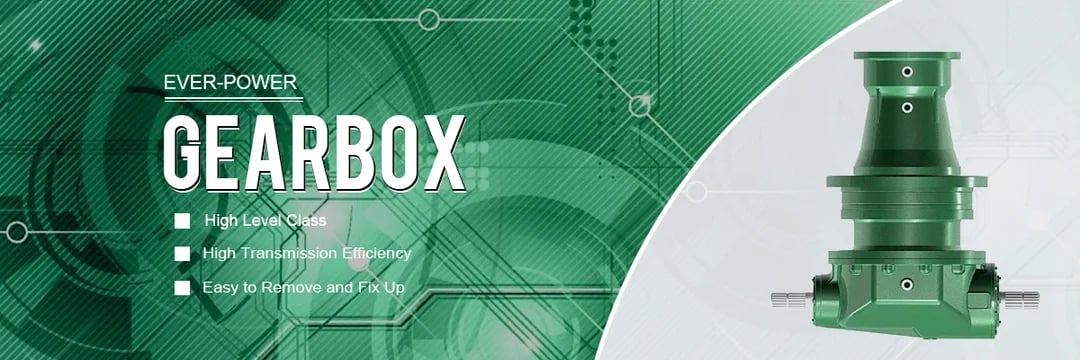

Substantial performance automotive h2o pump shaft bearing
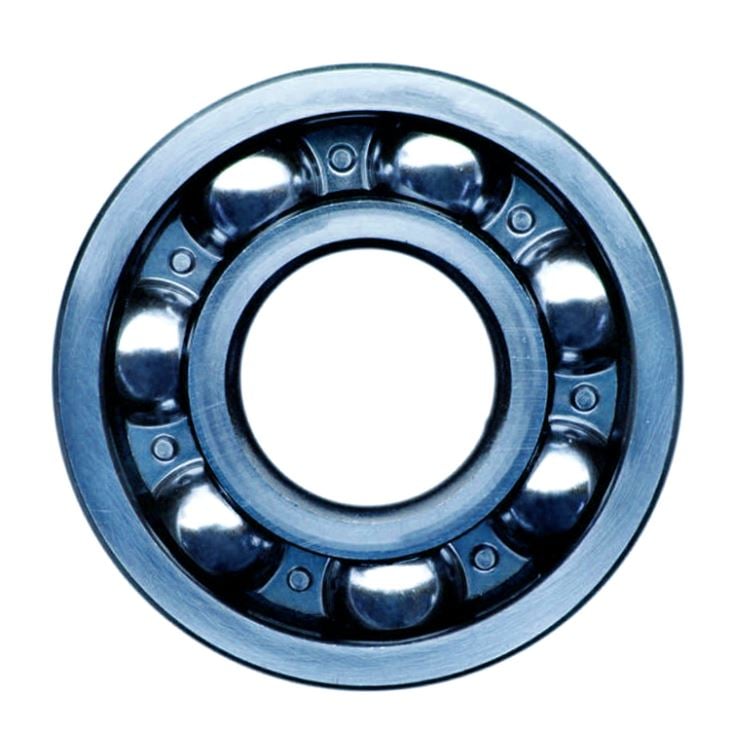

Merchandise parameter


| Designation | Dimension | ||||
| D | H | A | AH | d | |
| WB1224085 | 24 | 27 | 85 | 21 | 12.038 |
| WB1226086 | 26 | 39 | 86 | 12 | 12 |
| WB1226090 | 26 | 39 | 89.5 | 16.five | 12 |
| WPB12090BRS | 26 | 39 | 89.five | sixteen.5 | 12 |
| WB1226090-1 | 26 | 39 | ninety | 14 | twelve |
| WPB12090ARS | 26 | 39 | 90 | fourteen | twelve |
| WB1226091 | 26 | 39 | 91 | 17 | 12 |
| WPB12091RS | 26 | 39 | ninety one | seventeen | twelve |
| WB1226093-1 | 26 | 39 | 92.five | sixteen.five | 12 |
| WPB12093RS | 26 | 39 | ninety two.five | sixteen.5 | 12 |
| WB1226093 | 26 | 39 | ninety three | 16 | 12 |
| WB1226094Y | 26 | 39 | 94 | 21.5 | twelve |
| WB1226095 | 26 | 39 | 94.five | 21.five | 12 |
| BWF26-14 | 26 | 39 | 94.5 | 21.five | twelve |
| WS2372 | 26 | 39 | ninety four.five | 21.five | twelve |
| S16140R-5RS | 26 | 39 | ninety four.5 | 21.five | 12 |
| WB1226098 | 26 | 39 | 97.five | 17.five | twelve |
| WPB12098-3RS | 26 | 39 | 97.five | 17.five | twelve |
| WB1226099 | 26 | 39 | ninety nine | twenty five | 12 |
| S16140CRS | 26 | 39 | 99 | 25 | 12 |
| WB1226102 | 26 | 39 | 102.five | 21.five | twelve |
| S16140R-3RS | 26 | 39 | 102.five | 21.five | twelve |
| WB1226103-1 | 26 | 39 | 103.5 | 21.5 | twelve |
| BWF26-11 | 26 | 39 | 103.five | 21.five | twelve |
| WS2407 | 26 | 39 | 103.5 | 21.5 | 12 |
| WPB12103RS | 26 | 39 | 103.five | 21.five | twelve |
| WB1226103 | 26 | 39 | 103.five | seventeen.5 | 12 |
| WPB12104ARS | 26 | 39 | 103.5 | 17.five | twelve |
| WB1226104 | 26 | 39 | 103.eight | seventeen.5 | 12 |
| WB1226105 | 26 | 39 | 104.4 | twelve | |
| WB1226106 | 26 | 39 | one zero five.5 | sixteen.five | twelve |
| WPB12106RS | 26 | 39 | a hundred and five.5 | sixteen.five | 12 |
| WB1226114 | 26 | 39 | 113.5 | seventeen.5 | 12 |
| WPB12114RS | 26 | 39 | 113.5 | seventeen.five | 12 |
| WB1226117 | 26 | 39 | 117 | 26 | twelve |
| WB1224065 | 24 | 33.38 | 65.forty one | 16 | 12.038 |
| 395837 | 24 | 33.38 | 65.41 | sixteen | 12.038 |
| WB1224079 | 24 | 33.38 | 78.eighty three | 17 | 12.038 |
| 395671B | 24 | 33.38 | seventy eight.eighty three | 17 | twelve.038 |
| WB1224080 | 24 | 33.38 | 80 | 14.2 | 12.738 |
| 416787C | 24 | 33.38 | 80 | 14.2 | twelve.738 |
| WB1224083-one | 24 | 33.38 | 82.73 | 16 | twelve.038 |
| 395835 | 24 | 33.38 | 82.seventy three | sixteen | twelve.038 |
| WB1224083 | 24 | 25 | eighty three | 21 | 12 |
| WB1224081-1 | 24 | 33.38 | 83.fifty seven | 16.39 | 12.738 |
| FPS732 | 24 | 33.38 | eighty three.fifty seven | 16.39 | 12.738 |
| 412619AA | 24 | 33.38 | eighty three.fifty seven | sixteen.39 | 12.738 |
| WB1224084 | 24 | 33.38 | 83.nine | 22.two | twelve.038 |
| 395726 | 24 | 33.38 | 83.9 | 22.two | twelve.038 |
| WB1224085 | 24 | 27 | 85 | 21 | twelve |
Item demonstrate


A lot more Item
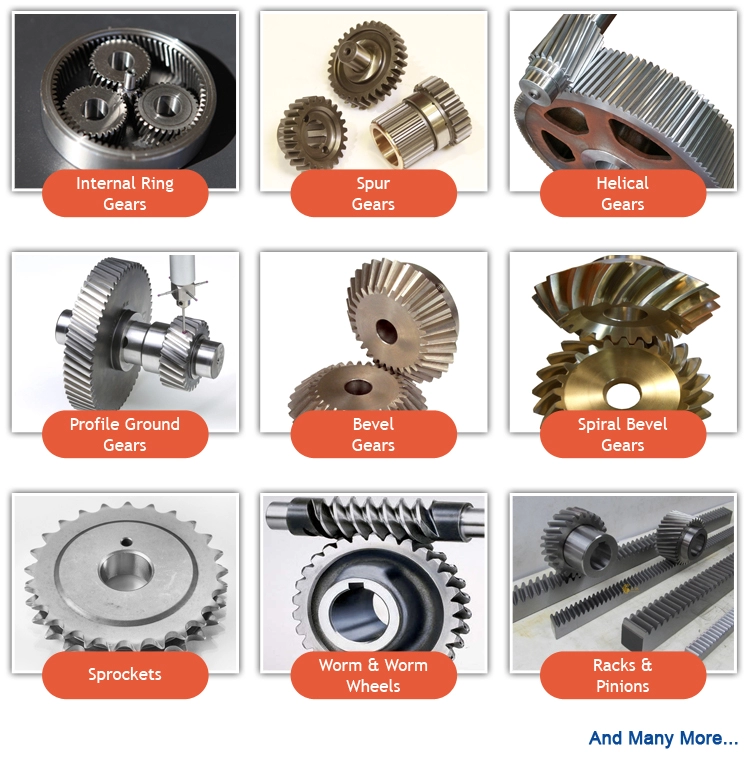

Firm Details


Established in May possibly 1979, the 12 months when China commenced its open policy, we are a mentioned owned complete business combining “sector & buying and selling, technologies & buying and selling”. In 2002, our organization changed from point out-owned company to private owned company.Backed up by strong economic electrical power, innovative facilities & technologies, and massive creation capacity of a lot of factories, Xinguang has been establishing speedily in enterprise considering that its basis build extended- term and friendly connection with several buyers from most regions of the world.Now, our workers are far more than 60, in which fifty percent of them are engineers. Almost certainly what can make us diverse from other tradingThe top quality of merchandise is for us and for our customers of high importance. This is why we use European created factors in our goods. We also perform continuous manage of incoming components and the manage of concluded products. In our organization we function according to ISO 9001. businesses is that we have a unique personnel of equally businessmen and experienced mechanical engineers, who have been working in the sector for several years. This function of us acts an essential part in quality management, expense management, and services functionality.Bearings & energy transmission factors are our main export products. Our bearings, chains, sprockets, pulleys, tapered bushings, and shaft collars have been mass -exported to a variety of countries and locations these kinds of as North The us, Europe, Africa, South The united states and Southeast Asia.
Our quality goods, prompt shipping, and aggressive pricing have acquired us a lot praise from the customers. By the challenging perform of our workers by way of thirty a long time, Xinguang has grow to be a single of the major exporters of bearings& electricity transmission elements in China.
We welcome consumers from the entire entire world to cooperate with us.
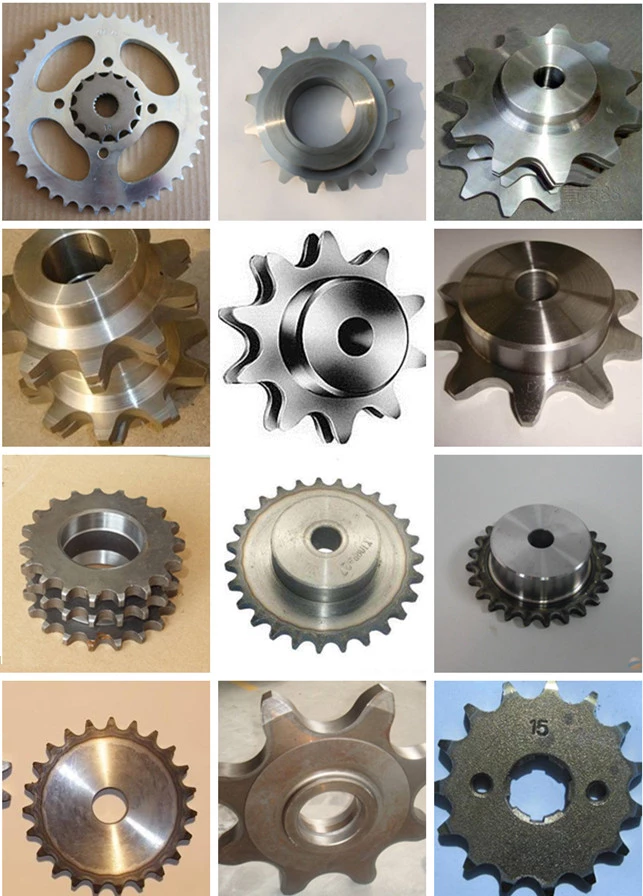

Make contact with us
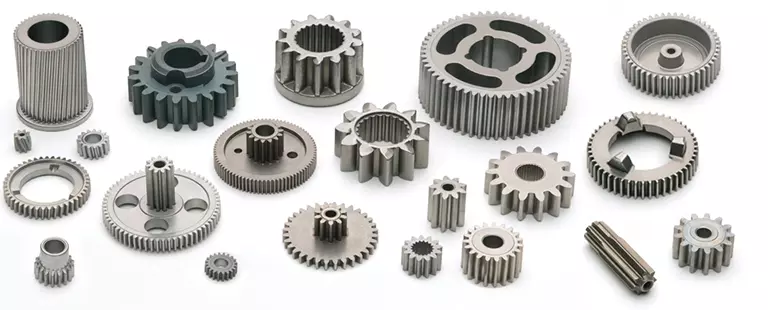








Best China manufacturer & factory china supplier Single-Row Tapered Roller Bearing Metric Series Koyo 30309 Rolller Bearing With high quality best price

Our product range includes all kinds of helical gear, spur gear, bevel gear, gear rack, worm gear, sprockets,chains, bearings, pto shaft, agricultural gearboxes.
Overview
Quick Details
- Applicable Industries:
-
Manufacturing Plant
- Application:
-
Car
- Precision:
-
P0
- Outer diameter:
-
135mm
-
thickness:
Our unparalleled research and development expertise is also reflected in our solutions: from low-backlash planetary gearboxes through servo right-angle gearboxes and complete drive units to EPG ® 5, our fundamentally redesigned sizing software. More than a million of our units are in use around the world – for example in machine tools and production systems, food and packaging machines, wood processing machines, robotics, transportation, automation and handling technologies. -
14mm
- Material:
-
Chrome Steel
-
Our patented coupling mechanism C Line is the result of our knowledge and development. It enables easy coupling and uncoupling of the PTO drive shaft. The cover offers the user more comfort because of its ergonomically and compact form. The users’ security is assured, because he can’t get entangled in protruding parts of the yoke. There is also less dirt present at handling and there are fewer difficulties connected with it.
- Operating tempereature:
-
-40°C +150°C
- Noise level:
-
ZV1 ZV2 ZV3
- RACEWAY hardness:
-
55~62HRC
- nner and outer ring modulation hardness:
-
229-268HB
- High operational efficiency:
-
compact design
Supply Ability
-
Supply Ability:
Our company has solid economic strength, builds up a technician team contingent with high quality, possesses the production assembly line of technicalization in China and perfect system checking on product quality and runs marketing networks throughout the country. - 1500000 Set/Sets per Month
Packaging & Delivery
- Packaging Details
- The oil is lubricated to prevent the drying from being sealed with a nylon plastic bag and stored in a wooden box.
- Port
- China any Port
-
Lead Time
: -
Quantity(Bags) 1 – 100 >100 Est. Time(days) 7 To be negotiated
Online Customization

 We – EPG – Ever power Transmission Co Ltd. is one of the biggest transmission company located in HangZhou near Xihu Lake.
We – EPG – Ever power Transmission Co Ltd. is one of the biggest transmission company located in HangZhou near Xihu Lake.
Why Choose Us
Product Description
Product Description
Tapered roller bearings are uniquely designed to manage both thrust and radial loads on rotating shafts and in housings. We manufacture nearly 26,000 tapered roller bearingcombinations – in single, double and four-row tapered roller bearing configurations. Customized geometries and engineered surfaces can be applied to these tapered roller bearings to further enhance performance in demanding applications.
Tapered roller bearings consist of four interdependent components: the cone, or inner ring; the cup, or outer ring; the tapered rollers, or rolling elements; and the cage, or roller retainer. The taper angles allow the bearing to handle a combination of radial and thrust loads. The steeper the cup angle, the greater the ability of the tapered roller bearing to handle thrust loads.
Taper roller bearing application:
Mainly used in axle box,motorcycle rear axle wheel hub, heavy machine tools’ main shafts, big power reduction gears, axletree axle boxes, roller wheels of transportation devices, and the supporting rollers and working rollers of the rolling mills.
Product Details
|
Brand |
New model |
The old model |
The inner diameter |
The outer diameter |
The thickness |
|
NSK |
NSK30X62X16 |
30MM |
62MM |
16MM |
|
|
SKF |
30306 |
30MM |
62MM |
16MM |
|
|
FAG |
30306 |
30MM |
62MM |
16MM |
|
|
NSK |
30306 |
30MM |
62MM |
16MM |
|
|
NTN |
30306 |
30MM |
62MM |
16MM |
|
|
NACHI |
30306 |
30MM |
62MM |
16MM |
|
|
SNR |
30306 |
30MM |
62MM |
16MM |
|
|
KOYO |
30306 |
30MM |
62MM |
16MM |
|
|
ZKL |
30306 |
30MM |
62MM |
16MM |
|
|
STEYR |
30306 |
30MM |
62MM |
16MM |
|
|
SKF |
30306 |
7206E |
30MM |
62MM |
16MM |
|
FAG |
30306 |
7206E |
30MM |
62MM |
16MM |
|
NSK |
30306 |
7206E |
30MM |
62MM |
16MM |
|
NTN |
30306 |
7206E |
30MM |
62MM |
16MM |
|
NACHI |
30306 |
7206E |
30MM |
62MM |
16MM |
|
SNR |
30306 |
7206E |
30MM |
62MM |
16MM |
|
KOYO |
30306 |
7206E |
30MM |
62MM |
16MM |
|
ZKL |
30306 |
7206E |
30MM |
62MM |
16MM |
|
STEYR |
30306 |
7206E |
30MM |
62MM |
16MM |
Single row taper roller bearings:
30204 32204 32304 32004
30205 32205 32305 32005
30206 32206 32306 32006
30207 32207 32307 32007
30208 32208 32308 32008
30209 32209 32309 32009
30210 32210 32310 32010
30211 32211 32311 32011
30212 32212 32312 32012
30213 32213 32313 32013
30214 32214 32314 32014
30215 32215 32315 32015
30216 32216 32316 32016
30217 32217 32317 32017
30218 32218 32318 32018
30219 32219 32319 32019
30220 32220 32320 32020
30221 32221 32321 32021
30222 32222 32322 32022
30224 32224 32324 32024
30226 32226 32326 32026
30228 32228 32328 32028
30230 32230 32330 32030
30232 32232 32332 32032
30234 32234 32334 32034
30236 32236 32336 32036
30238 32238 32338 32038
30240 32240 32340 32040
30242 32242 32342 32042
30244 32244 32344 32044
30246 32246 32346 32046
30248 32248 32348 32048
30250 32250 32350 32050
30252 32252 32352 32052
30254 32254 32354 32054
30256 32256 32356 32056
30258 32258 32358 32058
30260 32260 32360 32060
33200 series
33100 series
30600 series
About Us
We are located in the beautiful Peony Flower City, known as the “Bearing Town” of China’s thirteenth ancient capital – HangZhou. Is a professional design, research and development, production, sales and service in one of the slewing bearing integrated entity enterprise. Relying on the unique advantages of HangZhou old brand bearing processing base, the company has gathered a group of experienced bearing designers and skilled first-line production workers, together with advanced production and processing equipment and testing tools, to ensure the quality of products and related services from the root..
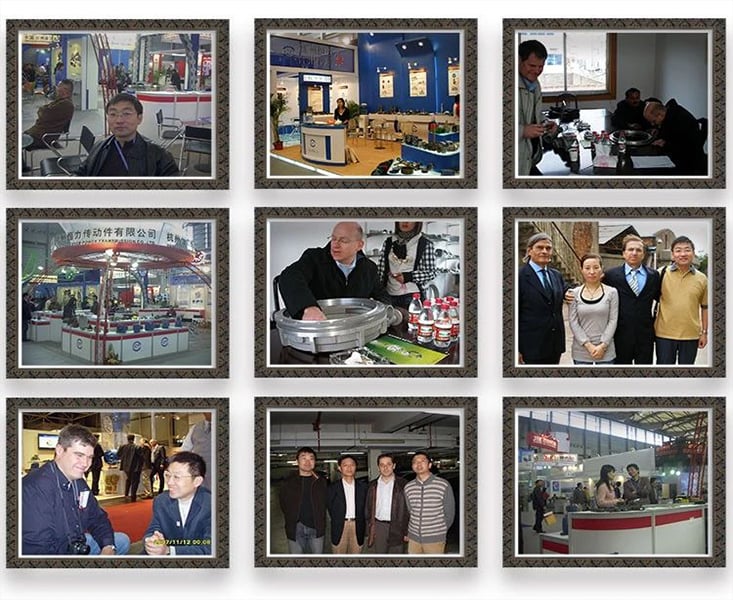

Wide production workshop and strong production team as a support,ensure the products can be produced by required quality and quantity. andThereby increase the customer benefits.
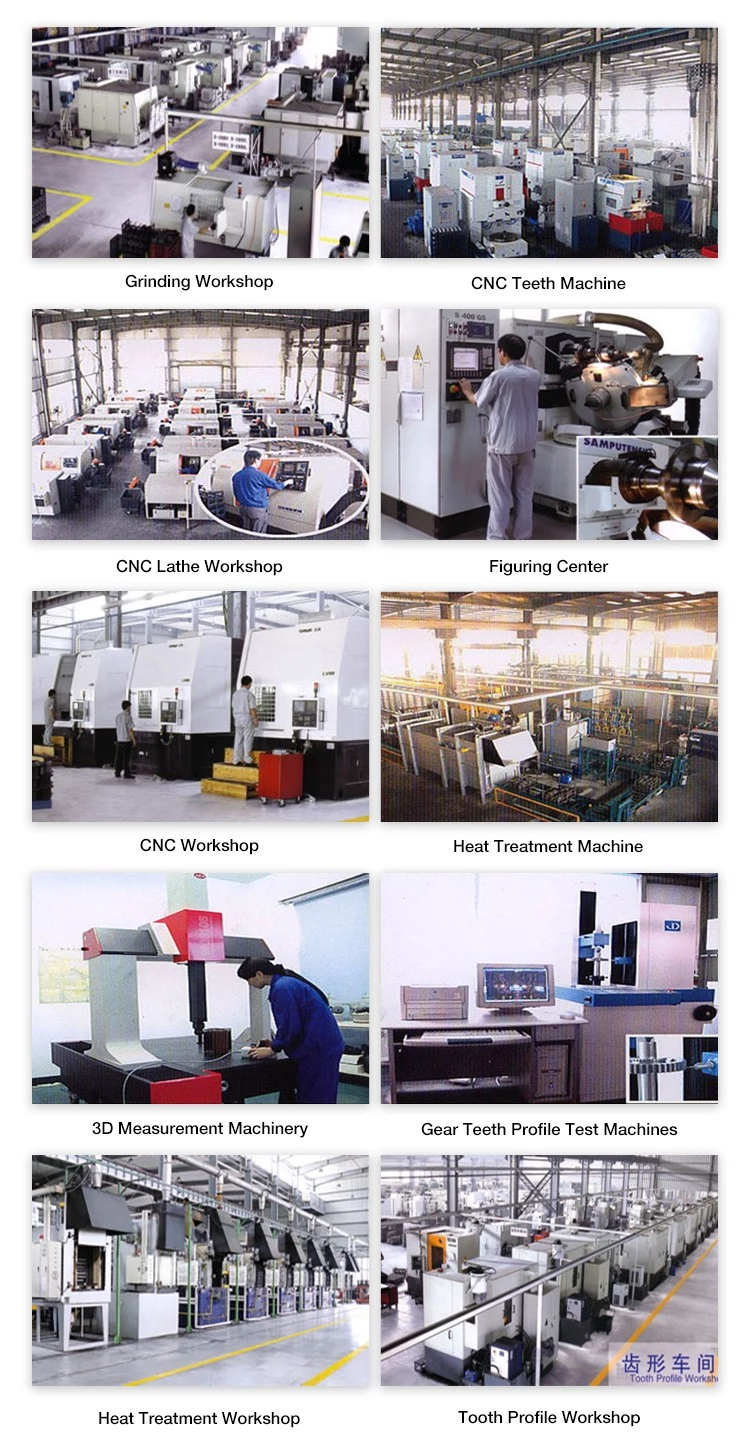

The above is our production equipment with advanced technology , the stable and longevity bearing produce from these equipment .
We specialize in the production of manufacturing slewing ring bearings or turntable Bearings.The Independent R&D and sales team in HGB , also do our best for special needs;We offer high-precision and high-quality slewing bearings, which are widly used in many fields,such as hoisting and conveying machinery, construction engineering machinery, harbour machinery, wind power generation, radar and missile launchers and so on.
Certificate
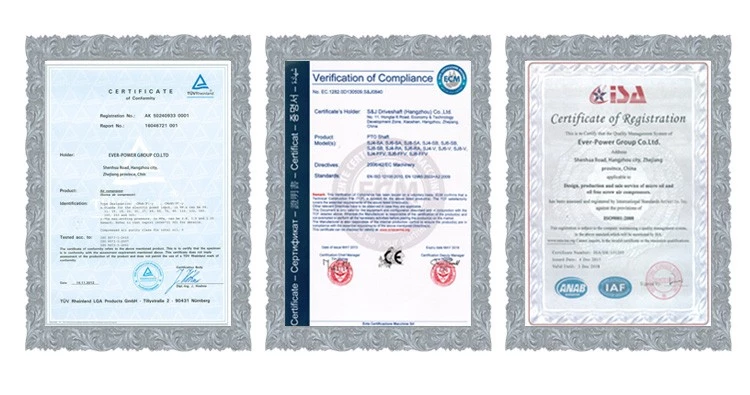

FAQ
1.Q: Are you trading company or manufacturer ?
A: We are professional bearing manufacturer with 20 years’ experience.
2.Q: How long is your delivery time?
A: Generally it is 4-5 days if the goods are in stock. or it is 45 days if the goods are not in
stock, Also it is according to quantity.
3.Q: Do you provide samples ? is it free or extra ?
A: Yes, we could offer the sample, it is extra.
4.Q: What is your terms of payment ?
A: Payment=1000USD, 30% T/T in advance, balance before shipment.
5.Q: Can you provide special customization according to the working conditions?
A: Sure, we can design and produce the bearings for different working conditions.
6.Q: How about your guarantee?
A: We provide lifelong after-sales technical service.
Contact Us
Wechat/Whatsapp: +86 13083988828
Skype: [email protected]
Company Name: HangZhou EPG – One of the bigggest transmission manufacturer in China – Ever-Power Transmission Bearing Technology Co., Ltd
Office Address: Room B8F, Block B, shenhua road 789 – jianqiaogongshe International, XiHu District, HangZhou City,China
Cell: +86-13083988828
Factory Address: Bearing zone in XiHu County, HangZhou City, China



Best China manufacturer & factory Idler Sprocket Roller Chain Ball Bearing Idler Sprockets With high quality best price

Keeping in mind that good service is the key to cooperating with clients, we strive to meet high quality standards, offer competitive prices and ensure prompt delivery.
Overview
Quick Details
- Applicable Industries:
-
Manufacturing Plant
- Standard:
-
ISO
- Place of Origin:Zhejiang, China
- Brand Name:
-
OEM
Supply Ability
- Supply Ability:
- 10000 Piece/Pieces per Week
Packaging & Delivery
- Packaging Details
- wooden case
- Port
- ningbo/shanghai
-
Lead Time
: -
Quantity(Pieces) 1 – 1 >1 Est. Time(days) 35 To be negotiated
Online Customization
EPG major production is of farming 15-500 horsepower tractor supporting machinery, mechanical cultivation, harvesting machinery and accessories.
Product Description


|
Idler Sprockets: Ball Bearing Idler Sprockets
Idler Sprockets: Ball Bearing Idler Sprockets have sealed ball bearings with extended inner race and setscrews for securing to the shaft. Projection From Centerline – Due to dimensional variation among bearing manufacturers this dimension may vary slightly when different brands of bearings are used. If you have a critical application please call for specific dimensions. Inner Race projection has 2 set screws on long side to secure bearing to shaft. “Basic Dynamic Ratings” calculated according to AFBMA standard for “Long Rating And Fatigue Life For Ball Bearings” Accurately machined, medium carbon steel sprockets and precision ground ball bearings are assembled to provide a heavy duty idler for the most severe conditions. The bearings are pre-lubricated and sealed to retain grease and exclude dirt and moisture. They are not re-lubricatable. The extended inner race with setscrew allows fastening to a pin or shaft without collars or spacing devices. It also provides clearance foIt must be fixed on a flat surface to avoid either vibrations or tensions nonwishedr the chain when bolting the sprocket directly to a frame member or tensioning device. A small sprocket for close quarters and a larger one for heavier service is provided in each pitch. If sizes other than those listed are required, please inquire for quotation. |
|
|
| Ever-power specialist in making all kinds of mechanical transmission and hydraulic transmission like: planetary gearboxes, worm gearboxes, in-line helical gear speed reducers, parallel shaft helical gear reducers, helical bevel reducers, helical worm gear reducers, agricultural gearboxes, tractor gearboxes, auto gearboxes, pto drive shafts, special reducer & related gear components and other related products, sprockets, hydraulic system, vaccum pumps, fluid coupling, gear racks, chains, timing pulleys, udl speed variators, v pulleys, hydraulic cylinder, gear pumps, screw air compressors, shaft collars low backlash worm gearboxes and so on. furthermore, we can produce customized variators, geared motors, electric motors and other hydraulic products according to customers’ drawings. The company provides a reliable gurantee for the product’ s quality by advanced inspection and testing equipment. professional technical team, exquisite processing technology and strict control system. In recent years, the company has been developing rapidly by its rich experience in production, adcanced managemant system, standardized management system, strong technical force. We always adhere the concept of survial by quality, and decelopment by innovation in science and technology. Ever-power Group is willing to work with you hand in hand and create brilliance together! |
Company Information
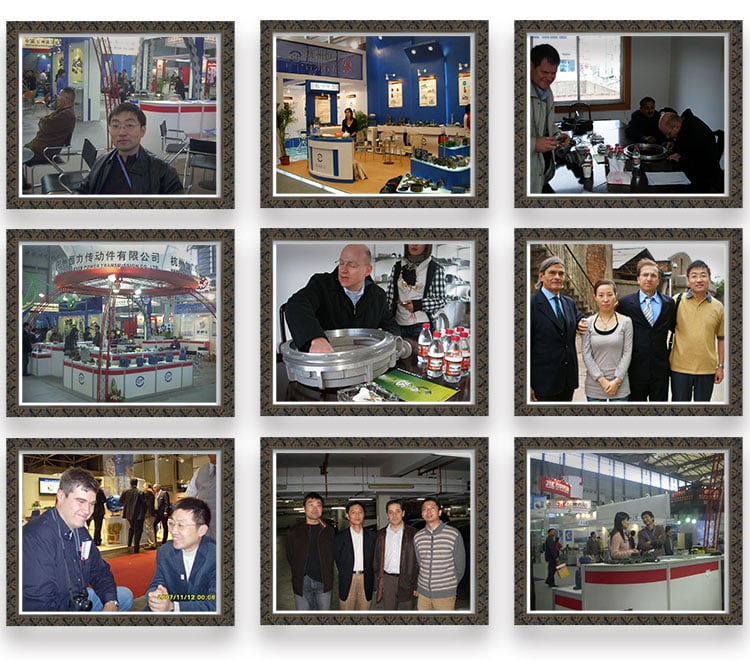

|
|
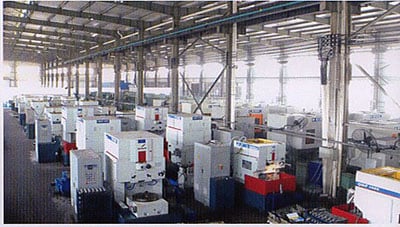  |
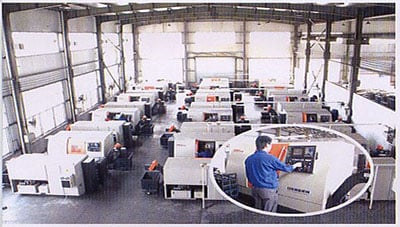  |
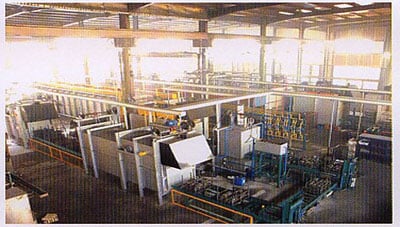  |
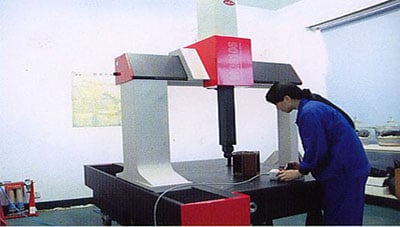  |
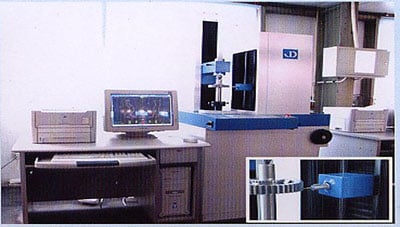  |
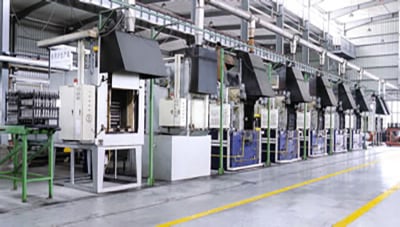  |
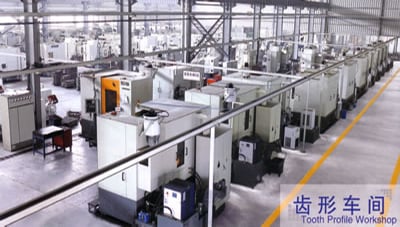  |
Material available |
Surface treatment |
Heat treatment |
|
Low carbon steel, C45, 20CrMnTi, 42CrMo, 40Cr, stainless steel. Can be adapted regarding customer requirements. |
Blacking, galvanization, chroming, electrophoresis, color painting, … |
High frequency quenching heat treatment, hardened teeth, carbonizing, nitride, … |
Certifications
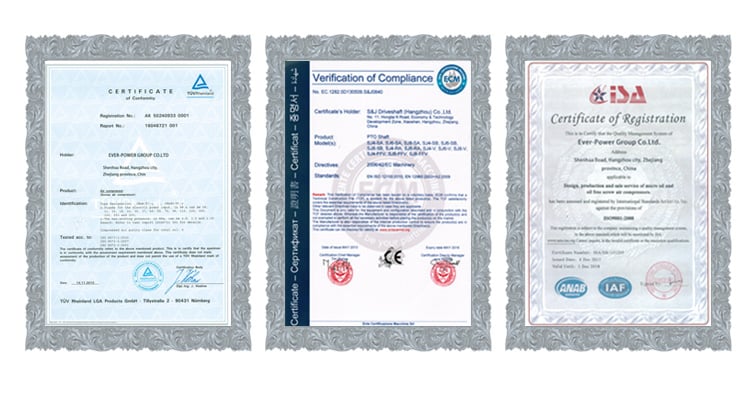

FAQ
Q: Are you trading company or manufacturer ?
A: Our group consists in 3 factories and 2 abroad salesThe EPG GROUP range of PTO shafts accessories includes various types of yokes for the connection of the tractor power take-off with recessed push button and/or ball collar and/or ball collar for constant velocity joints, with the following spline dimensions: 1”3/8 Z6 – 1”3/8 Z6 -1”3/8 Z21- 1”3/4 Z6- 1”3/4 Z20 corporations.
Q: Do you provide samples ? is it free or extra ?
A: Yes, we could offer the sample for free charge but do not pay the cost of freight.
Q: How long is your delivery time ? What is your terms of payment ?
A: Generally it is 40-45 days. The time may vary depending on the product and the level of customization. For standard products, the payment is: 30% T/T in advance ,balance before shippment.
Q: What is the exact MOQ or price for your product ?
A: As an OEM company, we can provide and adapt our products to a wide range of needs.Thus, MOQ and price may greatly vary with size, material and further specifications; For instance, costly products or standard products will usually have a lower MOQ. Please contact us with all relevant details to get the most accurate quotation.
If you have another question, please feel free to contact us.
Packaging & Shipping


Our Services
Also I would like to take this opportunity to give a brief introduction of our Ever-Power company:
Our company is a famous manufacturer of agriculture gearbox,worm reduce gearbox, PTO shafts, Sprockets ,rollar chains, bevel gear, pulleys and racks in china.
We have exported many products to our customers all over the world, we have long-time experience and strong technology support.
Some of our customer :
Italy: COMER,GB GEABOX ,SATI, CHIARAVALLI, AMA , Brevini
Germany: SILOKING ,GKN ,KTS
France: Itfran, Sedies
Brazil: AEMCO ,STU
USA: John Deere , BLOUNT, Weasler, Agco, Omni Gear, WOODS
Canada: JAY-LOR , CANIMEX ,RingBall
……
-Ø Our Company with over twelve year’s history and 1000 workers and 20 sales.
-Ø With over 100 Million USD sales in 2017
-Ø With advance machinery equipments
-Ø With large work capacity and high quality control, ISO certified.
……
you also can check our website to know for more details, if you need our products catalogue, please contact with us.
